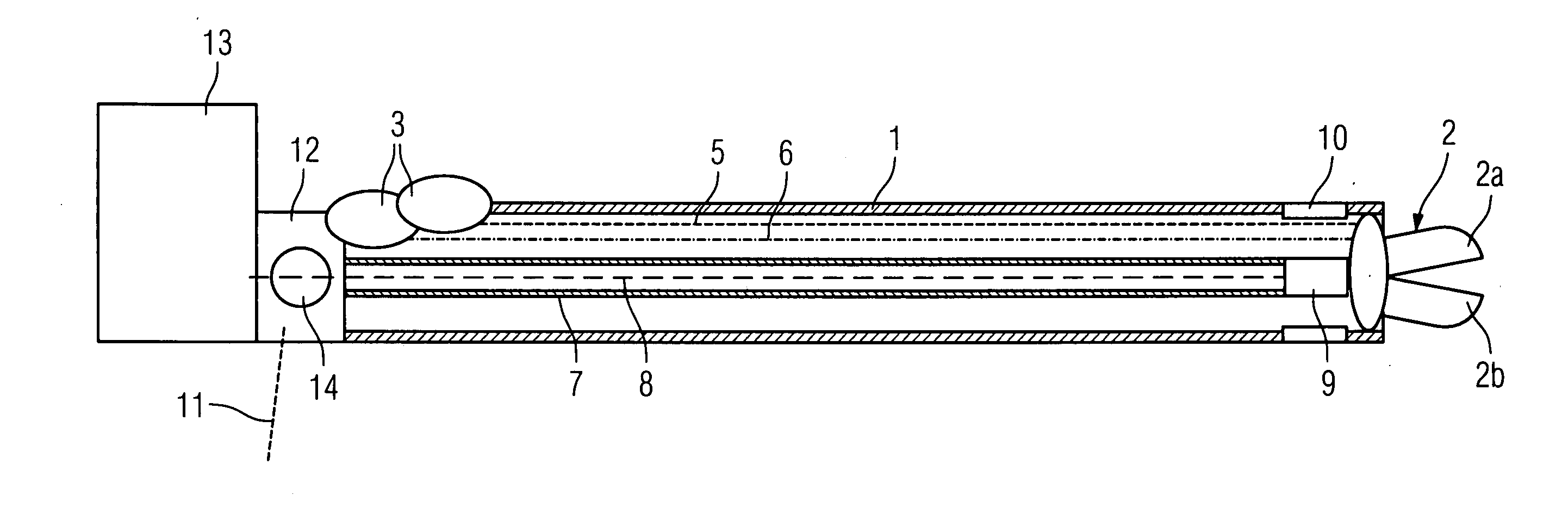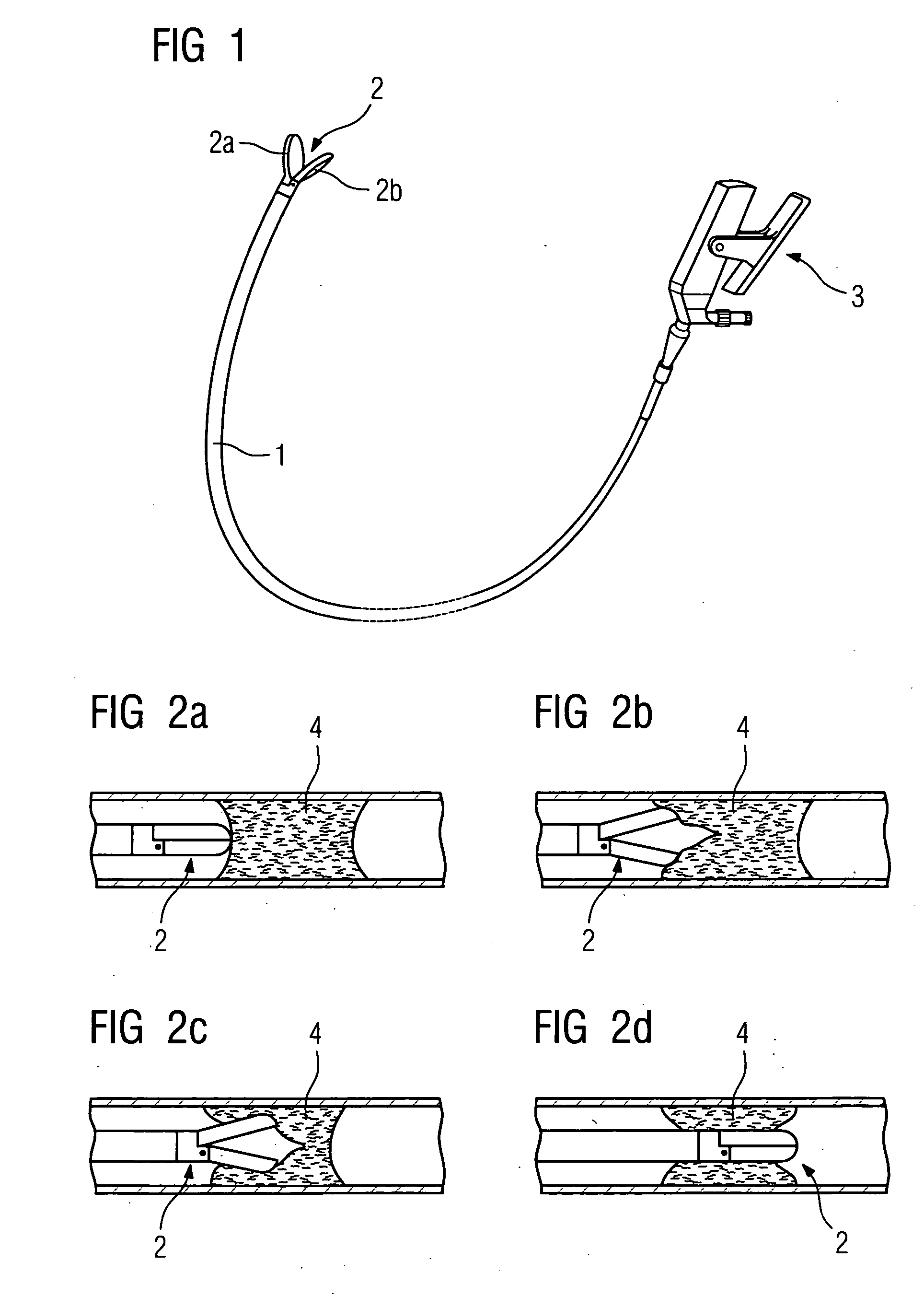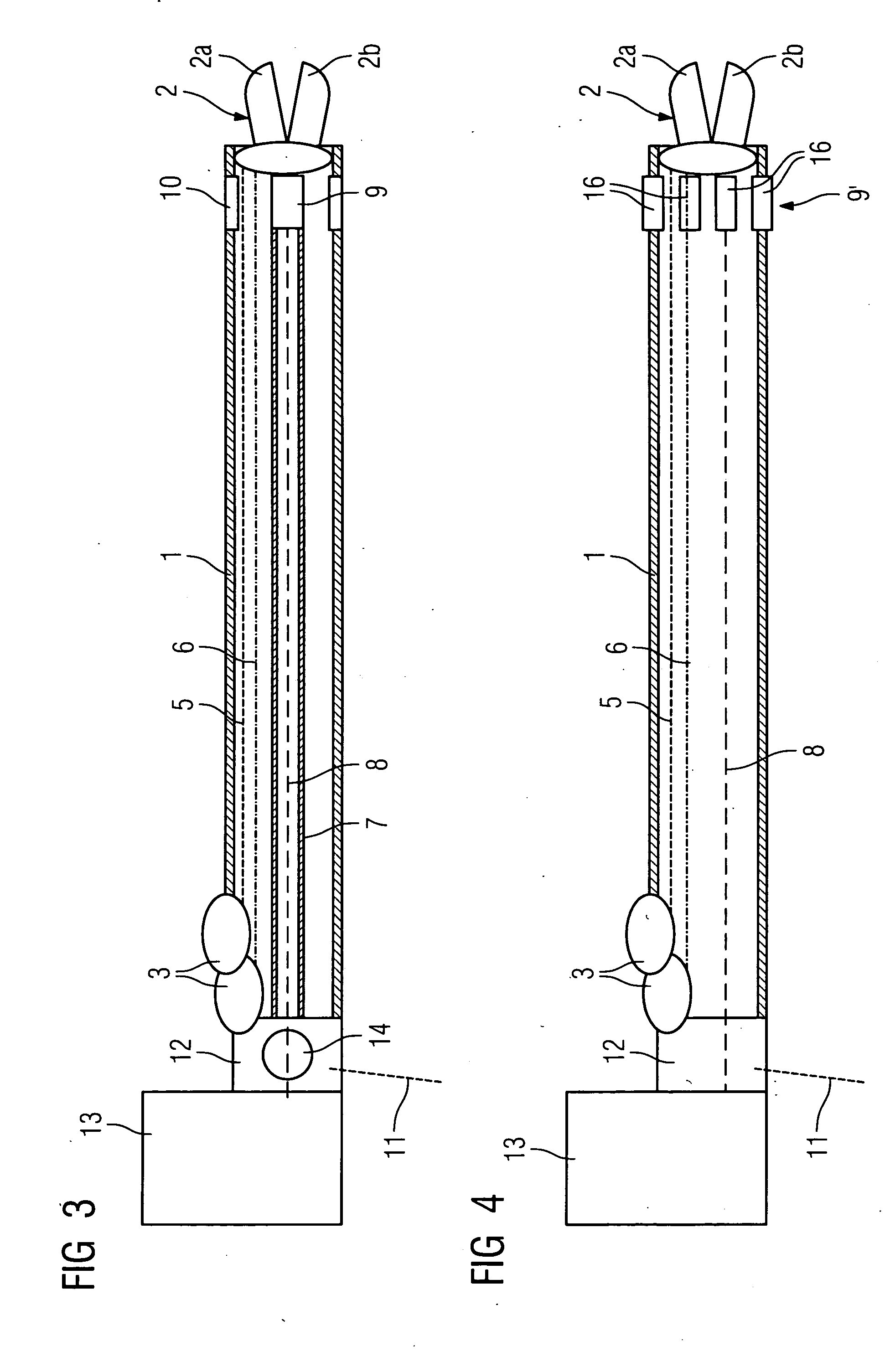[0005] The intervention with the CTO catheter is implemented using an
angiography system under x-
ray monitoring. The drawback of this method is that the coronary arteries are only shown in two dimensions and only the actual
stenosis is shown on the x-
ray image. In order to make the vessel clearly visible, it is additionally necessary to inject
contrast medium into the coronary arteries. In some patients
contrast medium allergies are known or patients report a sudden heat flush. In addition, during the intervention it is difficult for
medical staff to distinguish between plaque and vessel wall. This increases the risk that the “stretching tongs” will be positioned in the wrong places and that damage will occur to the vessel wall.
[0007] An object of the invention is therefore to configure a device of the type specified above, to provide an optimum device which is easy to use and which enables the point of intervention to be directly monitored, even during the vessel dilatation if necessary, without the tedious process of changing the various catheters.
[0009] The embodiment according to the invention provides an integrated module comprising a CTO catheter with an IVUS catheter integrated therein, representing an optimum
system for opening up complete vascular stenoses. The great
advantage of the solution lies in the reduction in process stages and in the catheters used, and also in the reduction of x-rays applied. The IVUS
system images provide important additional
medical information with
high resolution, particularly at
close range over the plaque and the
vascular wall. This means that the plaque can be identified, and can be removed by using the CTO “stretching tongs” at the right locations, and the success of the procedure can then be checked immediately without subjecting the patient to unnecessarily high levels of contrast media or x-rays. Furthermore, the risk of damage to the
vascular wall is reduced.
[0011] In order to dispose the IVUS sensor forward of the stretching tongs, thereby enabling a
direct observation of the complete
stenosis be fore the start of treatment, the
drive shaft for the IVUS sensor should be accommodated in the
catheter sheath with the IVUS
signal lines running therein so as to slide through the previously mentioned opening in the center of the stretching tongs. After the first observation of the complete stenosis, the IVUS sensor is withdrawn in the CTO
catheter sheath, so that the stretching tongs can then be deployed. The sensor can then be moved forward again, in order to observe the result of the work and so forth, so that the complete
vascular stenosis can gradually be gently opened.
[0012] Instead of the previously described arrangement with a rotating IVUS sensor, in a further embodiment of this invention provision can be made for IVUS
signal lines to be disposed in the tubular flexible sheath of the CTO catheter alongside the mechanical activation lines for the stretching tongs, whereby said IVUS
signal lines lead to a
sensor array comprising a plurality of
ultrasound transducers, said
sensor array being integrated in the
catheter sheath directly behind the stretching tongs. The provision of such a circumferential
sensor array, in which the individual
ultrasound transducers function simultaneously as transmitters and receivers, means that a rotating IVUS sensor is not required and, of course, no
drive shaft either. In this way rotating couplings for connecting the corresponding components of the combined catheter to the stationary
power supply unit are likewise no longer required.
 Login to View More
Login to View More  Login to View More
Login to View More 


